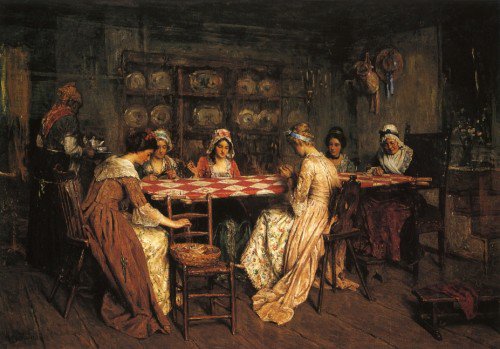


And when the baby cries in her cradle while Hannah prepares to go the barn, Hannah tells her to holler away if she feels like it: Mama simply must go feed the stock. She hasn’t got anything else to do, and she enjoys it, and is good at it, too. When Hannah’s husband is gone for a few days and she’s done all the housework and tended the baby and put the supper on, for example, she figures she might as well make some ax handles out of the spare hickory logs in the yard. She was raised by her widowed father and likes to hunt and track, though she also cooks and sews. Hannah Fowler is tall, physically strong, and homely. After the title character travels over the mountains to Kentucky during the Revolutionary War, she quickly enters into a marriage of convenience that is also one of unexpected attraction. Take Giles’s masterpiece, Hannah Fowler, for starters.


These are books that paint realistic pictures of how unique personalities and contexts affect marriage without denying the biological and social differences between men and women. Giles’s characters speak to the complicated question of how womanhood, manhood, and division of labor actually played out in marriages over time. Lately, I have been enjoying exploring this question in part through a handful of books (mostly fiction) by the mid-century American author Janice Holt Giles. Which parts of our cultural expectations about womanhood and manhood in marriage are and ought to be flexible, and which are not? How do we divide the work of family life in ways that are practical but also fitted to the particularities of a particular couple?Īs a historian, I am particularly interested in thinking about how our concepts of “traditional” roles match up against what we actually know about American marriage over time, especially in the 18 th and 19 th centuries. Efforts to attach inflexible “shoulds” to being a husband or wife often prove inadequate when applied to two real people, and yet there are natural and cultural reasons that do place real limits on the division of labor. Wrapped up as they are not just in the deeply important work of the family but also in debates over conceptions of biological sex itself, these roles are difficult to define. Marriage roles are hotly contested in our society.


 0 kommentar(er)
0 kommentar(er)
